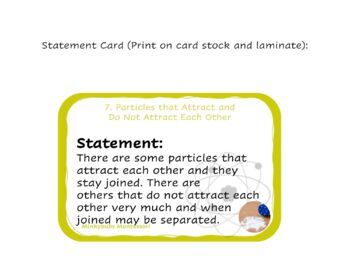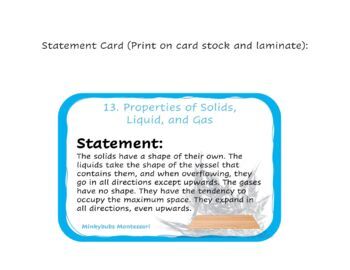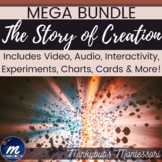Science Experiments Set of 21 Montessori Laws of the Universe History Geography
- PDF
- Easel Activity
Also included in
- Montessori's first great lesson is known as The Story of Creation, The Coming of the Universe, and/or The Story of the Creation of the Universe. The story begins 15 billion years ago through the Azoic Era to the present day state of our planet, Earth.Deliver the story with confidence and save yoursePrice $25.00Original Price $38.00Save $13.00
- Save yourself hours and hours and teach the great stories with confidence!Please read about the resources within the listings - there is so much here for you.Thank you for taking the time to look at this product!***************************************************************************To see all ofPrice $100.00Original Price $176.00Save $76.00
Description
Montessori's Laws of the Universe feature 21 Science experiments or demonstrations that are suitable for ALL children! This material is suitable for any classroom, homeschool, or educational environment - you do not have to be a Montessori teacher. Save yourself HOURS of work.
The ‘Laws of the Universe’ experiments are intended for children in preparation for the Story of Creation. The twenty-one experiments are presented in order and are an impressionistic way for children to learn about science and the history of our planet on a sensorial level. All of the information you need to perform these experiments is included:
- A numbered list of the experiments
- Command cards for each experiment
- Command cards for each scientific statement of outcomes
- A reproducible record sheet for student observations
Experiments included:
- Cold - Freezing
- The formation of the star
- Solid - Liquid - Gas
- Liquid - Viscous
- Passing from solid to liquid to gas
- Passing from gas to liquid to solid
- Particles that attract each other and particles that do not attract each other
- Mixture
- Chemical combination of gas
- Crystallization
- Chemical reaction
- Precipitation
- Properties of solid, liquid, and gas
- Elastic, plastic, and rigid Matter changes its state at different temperatures
- A) Law of gravity
- B) Density and the law of gravity
- Rapidity of cooling depends on the mass of the bodies
- Volcano
- Matter expands when heated
- Quick evaporation
Related Products
⭐ Montessori Clock of Eras Geology Timeline Impressionistic
⭐ Montessori Botany Experiments 21 Experiments Suitable Homeschool ALL STUDENTS
You can print the command cards for the experiments and statements double-sided on card and laminate, so that the child can perform the experiment and the flip over the card and read/record the statement.
WHAT ARE TPT EASEL ACTIVITIES?
Easel Activities are PDF pages that are customized using Easel then assigned to students via Google Classroom.
HOW TO USE TPT EASEL ACTIVITIES
These pages are ready for you to use but you can customize them if you like.
1. Go to the top of this page. (Make sure you are logged into TpT)
2. Click Open in Easel.
3. Click Preview to view the pages or Edit to choose the pages you want included.
4. Assign the resource to your students via Google Classroom by clicking “Assign.”
Copyright © Minkybubs Montessori. All rights reserved.
- This product is to be used by the original downloader only.
- Copying for more than one teacher, classroom, department, school, or school system is prohibited.
- This deck may not be distributed or displayed digitally for public view.
Failure to comply is a copyright infringement and a violation of the Digital Millennium Copyright Act (DMCA).
Did you know? When you leave feedback for any product you download and/or purchase on TpT, you gain credits that you can use to purchase products on TpT's website.








